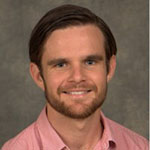Associate Member | Michael Smith Foundation for Health Research and Rick Hansen Institute Scholar

Phone: 604–675–8809
Email: west@icord.org
Lab Website: icord.org
Office Address:
ICORD, Room 4520
818 West 10th Avenue, Vancouver, BC V5Z 1M9
Mailing Address:
War Memorial Gymnasium, Room 210
6081 University Boulevard, Vancouver, BC V6T 1Z1
Twitter: DrCRWest
Education
Brunel University, 2011, PhD, (Sport & Exercise Science – Spinal Cord Injury)
Brunel University, 2008, MSc, (Sport & Exercise Science – Human Performance)
The University of Essex, 2004, BSc, (Sport & Exercise Science)
Courses Taught
KIN 275 Exercise Physiology I
Research Area
Research Interests
Research and Teaching
I am an integrative physiologist with a primary focus on how the cardiovascular and pulmonary systems respond to spinal cord injury. I conduct research across the translational spectrum including in rodents, pigs, the clinical spinal cord injury population, and with Paralympic athletes. I run the Translational Integrative Physiology Laboratory located at the Blusson Spinal Cord Center. This Center houses the International Collaboration on Repair Discoveries, a collection of over 300 individuals working to improve the lives of people with spinal cord injury. My laboratory is supported by an infrastructure grant from the Canadian Foundation for Innovation and the British Columbia Knowledge Development Found. I hold competitive operating funding from the Heart and Stroke Foundation of Canada, The Rick Hansen Institute, and the Craig Neilsen Foundation. In my work with the clinical spinal cord injury population, I have begun the first trial investigating the acute (within 12hr) cardiac responses to spinal cord injury, which involves assessing cardiac function during and following spine surgery. In my work with athletes, I have been part of an International Cardiovascular Health Clinic at the London2012 Paralympics, Socchi 2014 Paralympics and a number of world-championships events. In my pre-clinical experimental work, I combine state of the art cardiac imaging (MRI and high-frequency ultrasound) with invasive preparations (closed-chest cardiac pressure-volume loops) and standard bench techniques (molecular and histological approaches) to better understand how the heart responds to spinal cord injury and what mechanisms underlie the responses.